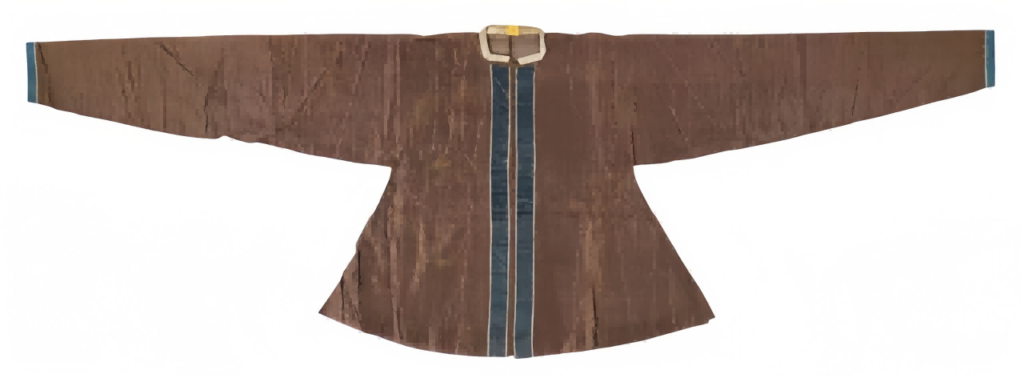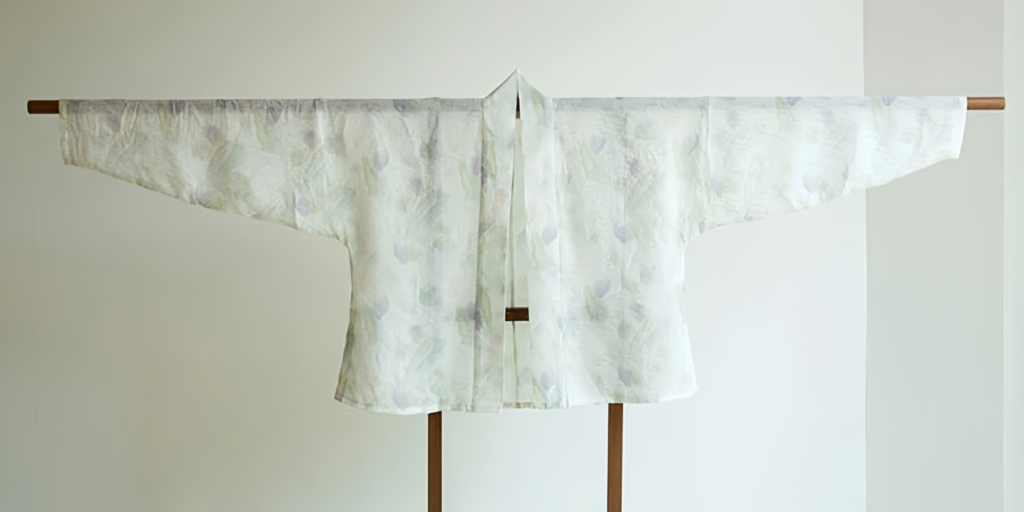The Five Classic Sleeve Styles of Ming Dynasty Hanfu

When it comes to the elegance and nobility of Hanfu, the Ming Dynasty Hanfu sleeves play a crucial role. For many, the most memorable feature of Hanfu is the wide sleeves. However, Hanfu sleeve designs aren’t just about width—there are various Ming sleeve styles with different widths, lengths, and shapes, each offering its own unique beauty. Which Ming sleeve style speaks to you the most? Let’s take a closer look!
Ming Dynasty Hanfu sleeves
1. Wide Sleeves (Da Xiu)
Wide sleeves, also known as “big sleeves,” are the most iconic feature of Hanfu, often referred to as the “fairy-like” sleeves. These sleeves are quite wide, sometimes even reaching the length of the sleeve itself, and are one of the most classic Ming sleeve styles. The posture of “wide sleeves and flowing robes” is especially common, symbolizing elegance and grace. Historically, due to the inconvenience of movement, wide sleeves were typically worn by the upper class, often as symbols of ceremony and status.

In the Ming dynasty, the wide sleeves of official robes, such as ceremonial attire and formal wear, were particularly broad and had folds at the bottom, made with ample fabric to appear dignified and generous. For everyday office wear, officials’ robes had slightly narrower sleeves, and the sleeve hems were more rounded and curvy.

For women, the Ming dynasty’s formal attire, like the “Da Shan Xia Pei” (a type of ceremonial robe), often featured wide sleeves. These garments were adorned with patterns signifying the wearer’s social class and had a simpler, yet elegant, design compared to more festive clothes like the “Ji Fu” (auspicious attire), which was often in bright colors like red and featured lucky symbols.

Wide sleeves weren’t just reserved for ceremonial clothing—they were also common in daily wear, like the Dao Robe or other simple, straight designs, typically worn by scholars and literati during leisure activities or visits. Over centuries, wide sleeves have become the quintessential expression of Hanfu, blending movement and ease in one beautiful design.

2. Pipa Sleeves (Pi Pa Xiu)
Pipa sleeves, developed during the Ming Dynasty, are another distinct Ming sleeve style. The design of the Pipa sleeve evolved from the “Chui Hu” sleeve, and it’s one of the most recognizable sleeve types from the Ming period. The overall shape of the Pipa sleeve features a wide body with a narrow cuff. The sleeve gradually widens towards the wrist, forming a curve resembling the shape of a traditional Chinese pipa (a stringed instrument).

Unlike the Chui Hu sleeve, Pipa sleeves have less of a draping or gathering effect, making them more streamlined and elegant. The sleeve gradually narrows near the cuff, making it both practical and stylish. The loose fit around the elbows allows for greater flexibility, while the narrowing towards the wrist makes the sleeves easier to manage in everyday life.

Pipa sleeves are known for their graceful, gentle appearance, representing the elegance and subtle beauty of traditional Chinese culture. They combine aesthetic appeal with functionality in a harmonious design.
3. Narrow Sleeves (Zhai Xiu)
As the name suggests, narrow sleeves are characterized by their tighter fit at the wrists. One of the most notable styles in this category is the “Arrow Sleeve” (Jian Xiu), which originates from the clothing of Northern ethnic minorities. The sleeve gradually tapers from the shoulder to the wrist, taking on a pointed, arrow-like shape.

Narrow sleeves, in general, are simpler and more practical for everyday wear. They’ve been widely adopted by the common folk over centuries and remain a timeless feature of Hanfu. The clean lines of narrow sleeves offer a streamlined look and are easy to wear, making them popular in casual settings.
4. Half Sleeves (Ban Xiu)
Half sleeves, also known as “half-arm” or “short sleeves,” are a shorter sleeve style that typically extends to the elbow. In the Sui dynasty, these were worn by both court officials and women. By the Tang dynasty, half sleeves became popular among the general public and eventually became a staple in civilian clothing.

Unlike the short sleeves we’re familiar with today, ancient half sleeves were often worn over a long robe or jacket, providing additional warmth. These garments allowed for creative layering and showcased a wide range of fashion styles, reflecting the wearer’s individuality through rich combinations of color and pattern.
5. Sleeveless (Wu Xiu)
Sleeveless garments, which are essentially shorter versions of half sleeves, have no sleeves at all. The length of these garments typically reaches the shoulder, resembling modern-day vests or sleeveless tops. The neckline of sleeveless Hanfu could vary from round to square to straight, offering different looks.

In the Ming dynasty, sleeveless Hanfu became quite fashionable for both men and women. These garments were often seen in forms like the “Da Hu” (a type of protective garment) or “Bi Jia” (a ceremonial robe), and their color combinations were frequently the subject of attention. Similar to half sleeves, sleeveless garments were often worn over other clothing, making them versatile and stylish for various occasions.

These five Ming Dynasty Hanfu sleeve styles—ranging from the wide and graceful to the sleek and practical—reflect the beauty and intricacy of ancient Chinese clothing. They represent both the cultural significance of tradition and the elegance of simplicity. Over the centuries, these Ming sleeve styles have not only survived the test of time but continue to captivate us with their timeless charm.
Explore the fascinating history of the Ming Dynasty and how its fashion evolved over time:Learn more about the Ming Dynasty and its fashion





Responses